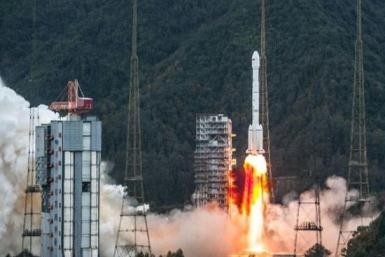China is set to launch its Long March 6 (CZ-6) carrier rocket in Taiyuan, in north China's Shanxi Province, on Sept. 19, Saturday, sending 20 small satellites into space, according to media reports on Sept. 17, Thursday.
As reported by the Global Times, the CZ-6 is a non-toxic and pollution-free rocket designed by the China Aerospace Science and Technology Corporation, developer of the Shenzhou VII spacecraft.
A number of next-generation technologies are incorporated in the rocket features, including a liquid oxygen kerosene engine, the report added.
The rocket was entirely developed in China at low cost, with high reliability, strong adaptability and good safety features.
Chinese prestigious universities like Zhejiang University, Tsinghua University and other research institutes joined together to develop the 20 satellites.
A previous report said that CZ-6 can place not less than 1 ton of payload into a sun-synchronous orbit at an altitude of 700 kilometers.
On Sept. 25, the country is expected to launch another rocket, the Long March 11 carrier rocket (CZ-11) in Jiuquan, in northwest China's Gansu Province, to carry three satellites with it.
Designed by the China Academy of Launch Vehicle Technology, the CZ-11 is the country's first solid launch vehicle and compared to other rockets, it takes only hours to launch, although the preparations usually take months.
China has outlined its five-year space mission in 2011 that included the launch of manned spaceships, next-generation rockets and the use of cleaner fuel. All of these initiatives are expected to help the country achieve its goal to build a space station by 2020.
The report added that the country will launch two more rockets, the Long March 5 and Long March 7, in 2016.
The Long March 5, under development by the China Academy of Launch Vehicle Technology, uses non-toxic and pollution-free propellant, and can place 25-ton payloads into near-Earth orbit, or 14-ton payloads into geostationary orbit.
The Long March 7, on the other hand, can place 5.5-ton payloads into orbit at the same elevation as the CZ-6.




























